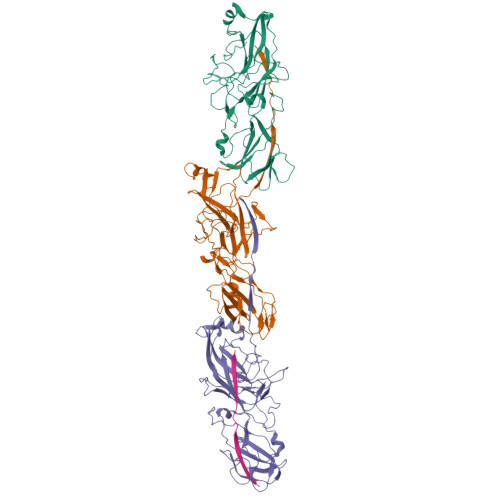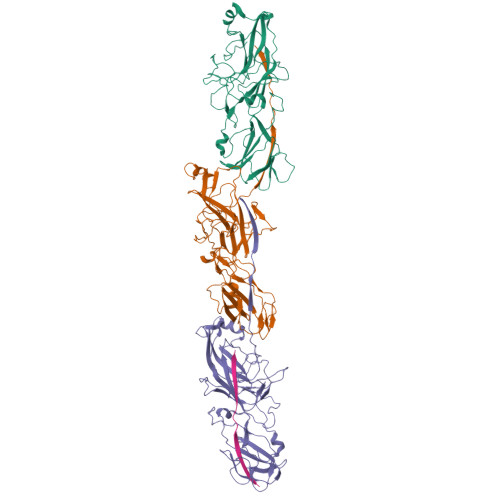Structure of polymerized type V pilin reveals assembly mechanism involving protease-mediated strand exchange.
Shibata, S., Shoji, M., Okada, K., Matsunami, H., Matthews, M.M., Imada, K., Nakayama, K., Wolf, M.(2020) Nat Microbiol 5: 830-837
- PubMed: 32284566
- DOI: https://doi.org/10.1038/s41564-020-0705-1
- Primary Citation of Related Structures:
6JZJ, 6JZK, 6KMF - PubMed Abstract:
Bacterial adhesion is a general strategy for host-microbe and microbe-microbe interactions. Adhesive pili are essential for colonization, biofilm formation, virulence and pathogenesis of many environmental and pathogenic bacteria 1,2 . Members of the class Bacteroidia have unique type V pili, assembled by protease-mediated polymerization 3 . Porphyromonas gingivalis is the main contributor to periodontal disease and its type V pili are a key factor for its virulence 4 . However, the structure of the polymerized pilus and its assembly mechanism are unknown. Here we show structures of polymerized and monomeric states of FimA stalk pilin from P. gingivalis, determined by cryo-electron microscopy and crystallography. The atomic model of assembled FimA shows that the C-terminal strand of a donor subunit is inserted into a groove in the β-sheet of an acceptor subunit after N-terminal cleavage by the protease RgpB. The C terminus of the donor strand is essential for polymerization. We propose that type V pili assemble via a sequential polar assembly mechanism at the cell surface, involving protease-mediated strand exchange, employed by various Gram-negative species belonging to the class Bacteroidia. Our results reveal functional surfaces related to pathogenic properties of polymerized FimA. These insights may facilitate development of antibacterial drugs.
Organizational Affiliation:
Molecular Cryo-Electron Microscopy Unit, Okinawa Institute of Science and Technology Graduate University, Onna-son, Japan.


















